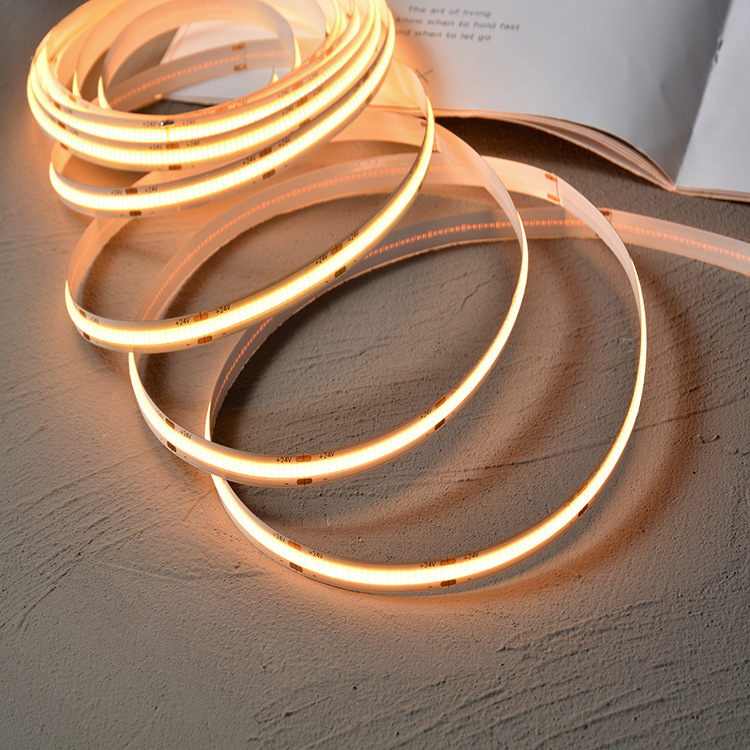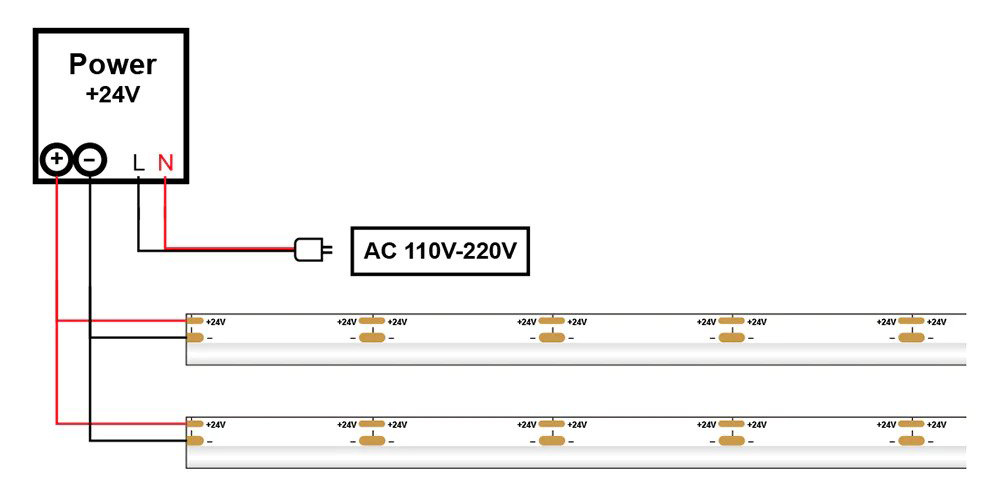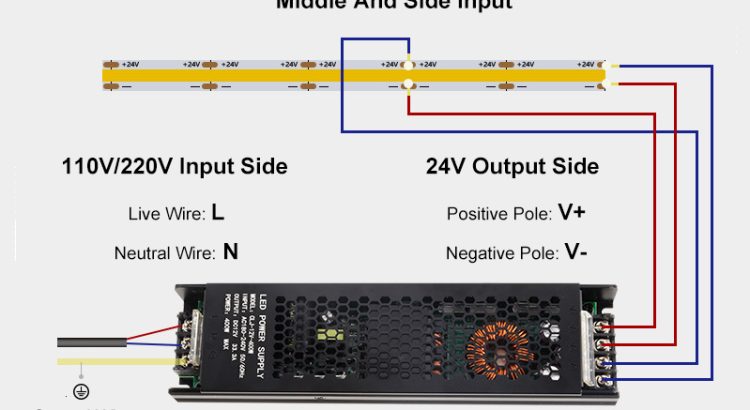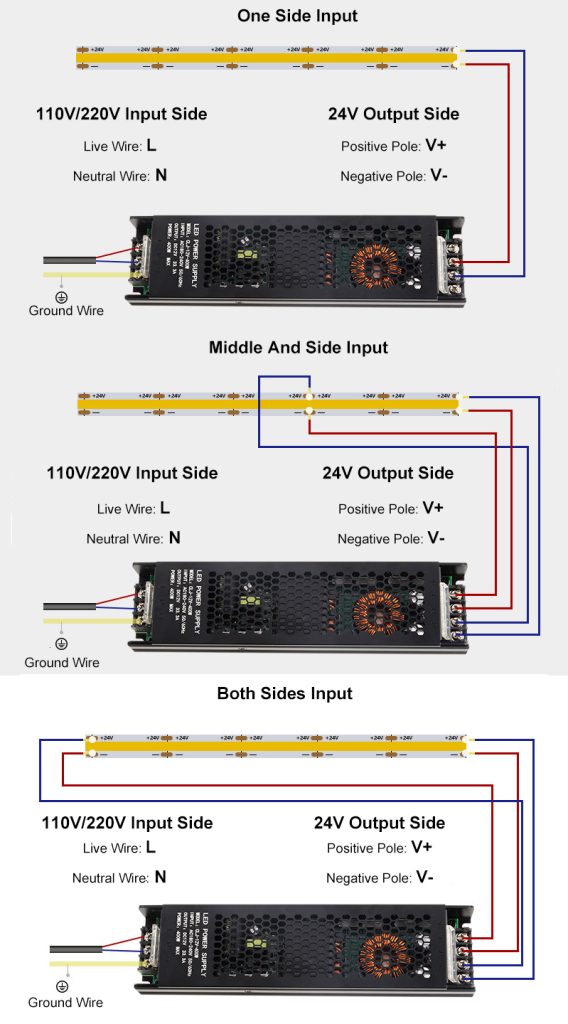When you connect multiple 5-meter light strips in series, you will find that the LEDs closer to the power source are brighter than those farther away. This is a voltage drop issue that causes inconsistent brightness. Today, we will check how to solve this issue.

What Is Voltage Drop?
When the light strip is connected in series for more than 10 meters, the voltage will decrease when the current passes through many electronic components: LEDs and resistors. For example, if the normal working voltage is 24V, the measured voltage may be only 20V at 15 meters. If the working voltage of the LED is lower than the standard working voltage, it will appear darker to the naked eye compared to the LED closer to the voltage. This is called voltage drop.
How To Solve?
There are three solutions to solve the voltage drop issue.
- Connect the LED Strips in parallel.
If you are installing multiple light strips for your project and need them to be uniformly bright, we would recommend connecting them in parallel to a power supply or controller so that all LEDs have the same operating voltage.

2. Choose the high-voltage LED Strips
Because the high-voltage light strips have a parallel design of the lamp beads on the circuit, the voltage drop is very unobvious even in long-distance projects, so they are very suitable for outdoor long-distance projects. The maximum lengths can be 50 meters or 100 meters per roll, and they can be connected in series.
3. Add voltage From the Middle Or Other End
The third solution to fix the voltage drop issue is to add the same voltage from the middle or the other end if the length of the parallel light strip exceeds 10 meters or 15 meters. It is suitable for indoor and outdoor voltage light strip projects. Below is a picture of the wiring diagram for all kinds of connections.
Conclusion
For most users, the method of adding voltage is easiest. No matter how long the light strips are, if you find that the brightness of the LEDs is inconsistent, especially for the high-density COB or SMD LED strips, you can solve this problem by adding the voltage from the middle or the end as shown in our picture.

